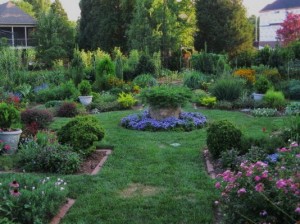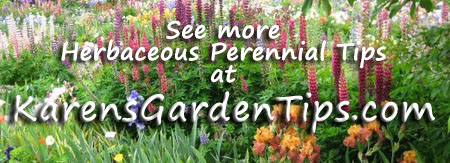 Everyone would like to have a lush garden without doing any work but, let’s face it, that is not going to happen unless you have a gardener. By selecting plants carefully, however, you can reduce the amount of work to a minimum and get the look you want. You may have to give up some of the prima donnas of the garden world, like Pacific hybrid delphiniums, but there are plenty of beautiful plants that are easy going and will thrive with only a little care.
Everyone would like to have a lush garden without doing any work but, let’s face it, that is not going to happen unless you have a gardener. By selecting plants carefully, however, you can reduce the amount of work to a minimum and get the look you want. You may have to give up some of the prima donnas of the garden world, like Pacific hybrid delphiniums, but there are plenty of beautiful plants that are easy going and will thrive with only a little care.
Here are the characteristics to consider when selecting low maintenance perennials. Keep in mind that all perennials are going to require some work so the goal is to find plants that require the least work. Furthermore, the amount of care a perennial needs will vary with the climate and soil conditions so a low maintenance plant in the North may not be low maintenance in the South. To be considered low maintenance, a perennial should have most of the following characteristics.
1. Tolerance to variations in moisture, heat and humidity.
Moisture can be an issue any place in the country but heat and humidity are regional. If a plant is not tolerant of variations in moisture, supplemental watering may be necessary. Heat can weaken plants and cause them to shrivel up and die while humidity can cause them to melt out. In either case, dead material has to be removed, and plants may need to be replaced.
2. Cold Hardiness
Check hardness USDA zones before buying plants. Plants that die in the winter have to be removed and replaced.
3. Long Life span
Some perennials only live a year or two before they need to be replaced. Try to find plants that have a life span of at least five years.
4. Low Need for Division
Many perennials never need dividing and some even resent it. Still others need division on a regular basis. Look for ones that need dividing every four years or more.
5. Low Need for Deadheading, Shearing, Pruning.
Deadheading is important for many plants to keep them blooming and some can be sheared or cut back to accomplish this. Many perennials will need some pruning after flowering or to maintain an attractive habit throughout the growing season. If more than one or two of these tasks are needed during the growing season, you might consider the plant high maintenance.
6. No Need for Staking
Staking is a time consuming job that usually results in an ugly looking plant. Some plants, like peonies are worth the trouble and investment in plant supports with grids that hold up their heavy flowers. Many perennials, however, can be pruned early in the season to encourage stronger stems and shorter growth which lesson the need for stakes but add to garden maintenance.
7. Resistance to Disease and Pests
Plants vary considerably in regard to pest and resistance. Once cultivar may be more so than another so go for the one that has the most resistance. Spraying, dusting, and other such control measures take a lot of time, can be expensive, and create environment problems and health hazards.
8. Average to Low Fertility Requirements
Plants vary in the amount of nutrients they need. Most perennials only need a layer of compost and/or a light application of fertilizer in spring but some require a supplemental application all through the growing or blooming season increasing cost and maintenance.
9. Non-Invasive
Under the favorable plants can spread intrusively which means more time must be spent weeding. Plants may spread by wandering underground parts that sprout, or by prolific seed production. In the latter case, deadheading before the seeds develop can solve the problem, but the deadheading involves more maintenance time.
A perennial with all these characteristics is certainly a gem. Unfortunately, such plants are probably very popular and therefore will appear common, leading to a search for something special and perhaps high maintenance. There are just some plants that are worth a lot of work and there is nothing wrong with growing a few of these as time and inclination permit. After all, if you have a garden full of low maintenance perennials, what’s wrong with a stand of Pacific hybrid delphiniums?
